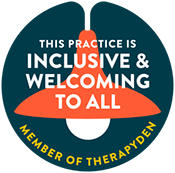The new TV series The Secret Lives of Mormon Wives has sparked conversations not only about the complex experiences of women in high-demand religious communities, but also about the therapeutic tools portrayed on screen. One of the most notable moments is the depiction of Eye Movement Desensitization and Reprocessing (EMDR), a trauma-focused therapy that has gained significant attention for its effectiveness in helping individuals process overwhelming or unresolved experiences. While fictional portrayals of therapy often miss the mark, this series offers viewers a surprisingly grounded glimpse into what EMDR can look like and why it resonates with so many people seeking healing.
At Anchor Therapy, we are always mindful of how the media influences public understanding of mental health treatment. When therapy is shown accurately, it opens doors for people who may never have known help was available or who may have questioned whether their own experiences “count” as trauma. In this blog, we will explore what The Secret Lives of Mormon Wives gets right about EMDR, clarify where art understandably departs from clinical reality, and offer insight into how EMDR truly supports individuals navigating religious trauma, identity conflict, and emotional wounds that develop behind closed doors.














